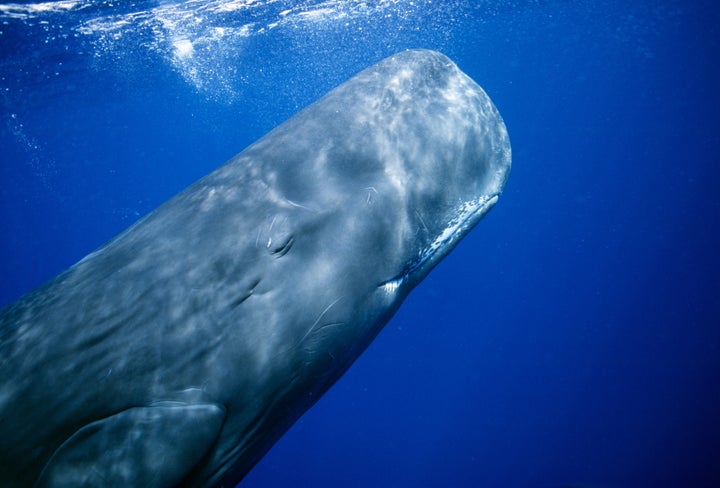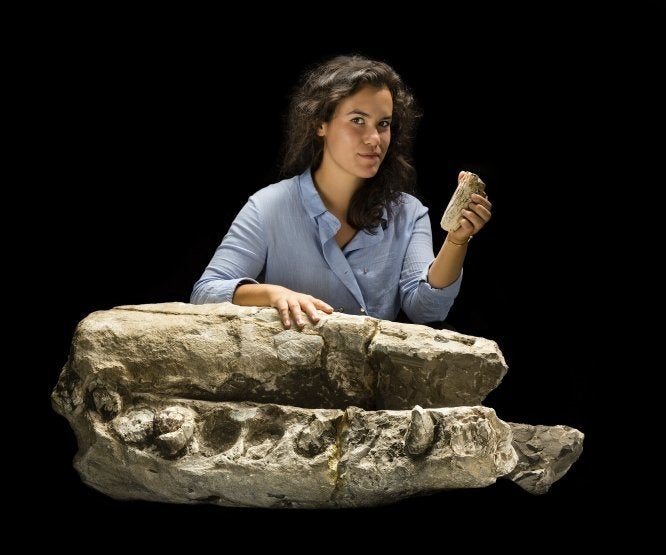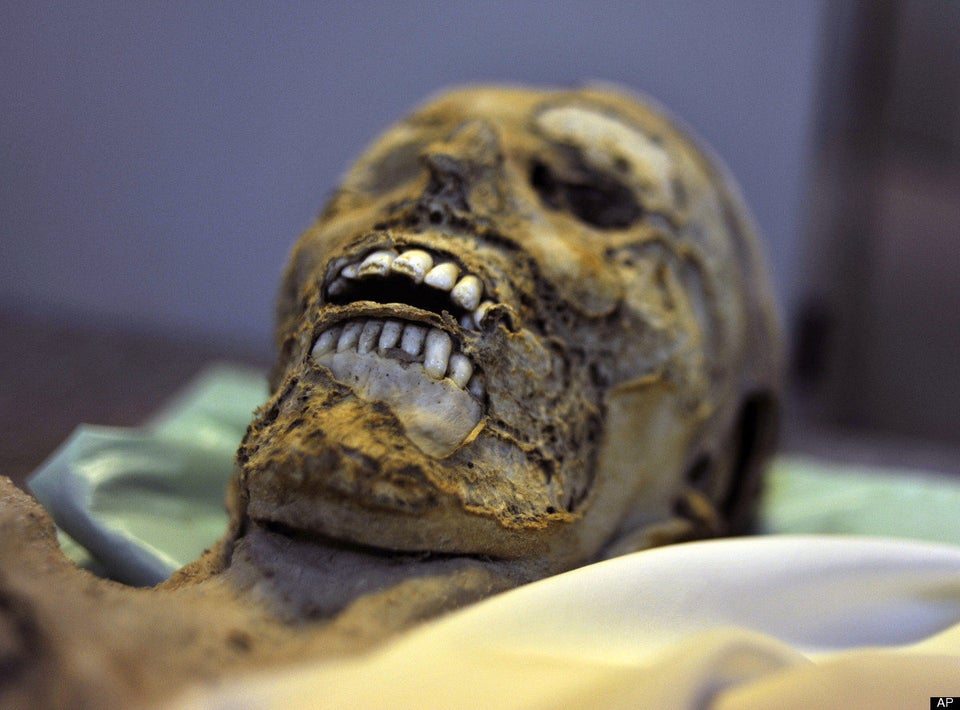For 90 years, the strikingly white fossils of a 15 million-year-old sperm whale sat on a storage shelf in the Smithsonian Museum of Natural History, incorrectly grouped with the remains of extinct walruses.
A duo of Smithsonian scientists recently took those forgotten fossils down from that old shelf, and, after re-examining and reclassifying them, realized they belonged to a previously undiscovered species of sperm whale.
Welcome to the modern world, Albicetus oxymycterus.

Alexandra Boersma, lead researcher on a study published Wednesday in PLOS ONE, and Nick Pyenson, the museum's curator of marine mammals, chose to name their discovered genus Albicetus because it translates to "white whale." The name pays homage to the pale mystical leviathan that captured Captain Ahab's obsession in the novel Moby Dick.
"While we don't know what its skin color in life actually looked like, the color of the fossil is an ashen white," Pyenson said in a press release.
"It only seemed appropriate to evoke [Herman] Melville’s white sperm whale, Moby Dick," he added. "Especially since we studied A. oxymycterus alongside the skeletons of some of its modern-day relatives in the collections here at the Smithsonian."
Below, an interactive 3D rendering of the fossil, featuring the beak and lower jaw of the whale.
The fossils, which are from the animal's skull, jaw and teeth, were discovered in California in the 1880s and date back 14 to 16 million years. A Smithsonian scientist incorrectly identified them as belonging to a walrus in 1925.
Properly identifying the new species has allowed Boersma and Pyenson to better understand the evolution of sperm whales.
"One of our most important findings in studying Albicetus was that it not only represented an entirely new genus of fossil sperm whale, but it also prompted us to look where Albicetus fit into the evolution of sperm whales," Boersma said in the press release.

As Albicetus evolved into a new type of species, it developed very different features from the modern sperm whales we see today.
Albicetus were relatively small whales that grew to approximately 20 feet in length, the researchers estimate. Modern sperm whales can reach 60 feet. But don't let its meager size fool you: The Albicetus may have been more ferocious than its distant cousin.
The proof is in the teeth. Despite its smaller stature, the Albicetus' teeth were the same size as those of today's sperm whale.
"The biggest difference would be this really big, gnarly jaw full of these huge teeth," Boersma told The Guardian. "They were kind of comically huge in both their upper and lower jaws."
What's more, today's sperm whale only has teeth on its lower jaw, which suggest that the toothier ancient whale -- which had a set of chompers on both the top and bottom jaws -- may have gone after larger prey such as other marine mammals like seals. Modern sperm whales, on the other hand, feed mostly on large squid.

These toothy fossils prove that the ancient seas were filled with an abundance of diverse marine mammals, Boersma and Pyenson said.
"It represented a kind of peak in marine mammal richness," Boersma told The Guardian.
The researchers used 3D digitization to capture the entire geometry of the fossils, some of which were hundreds of pounds, and examine the extinct whale's unique anatomy. They've uploaded their rendering to the Smithsonian X 3D website, where it is available for download.
Also on HuffPost:

